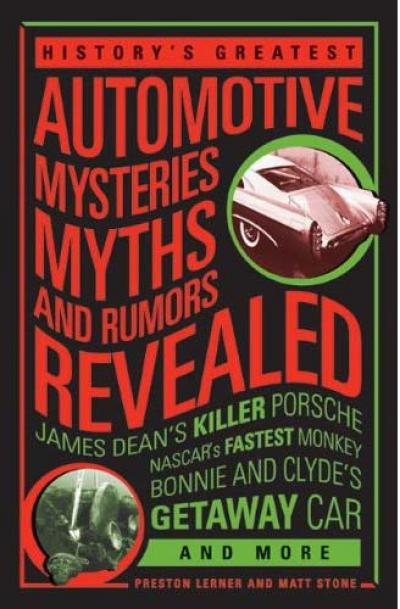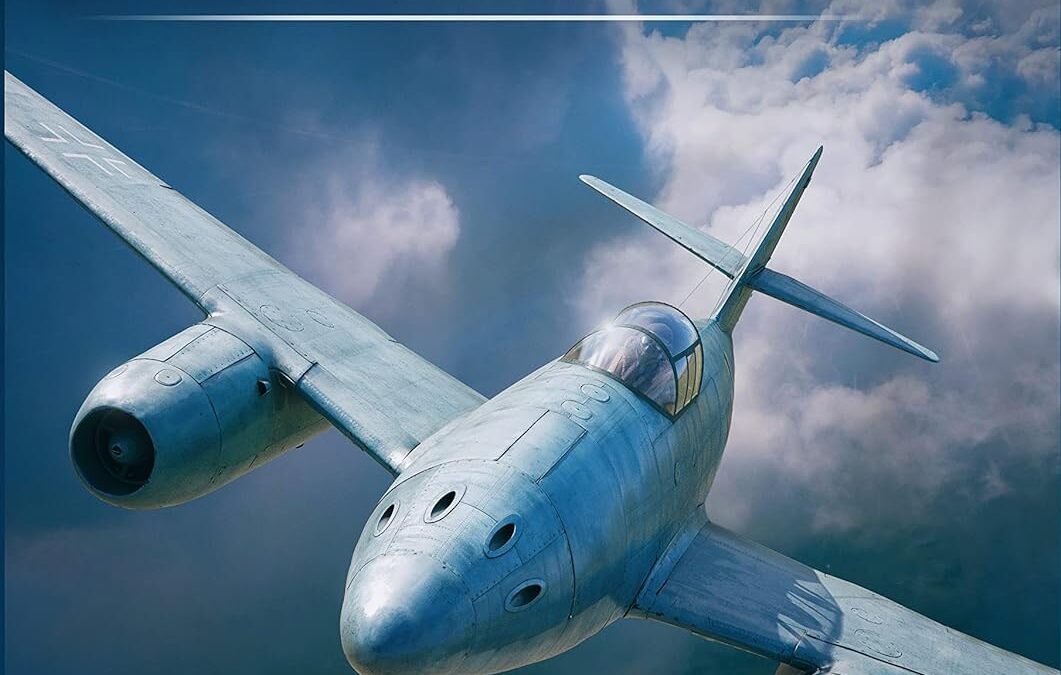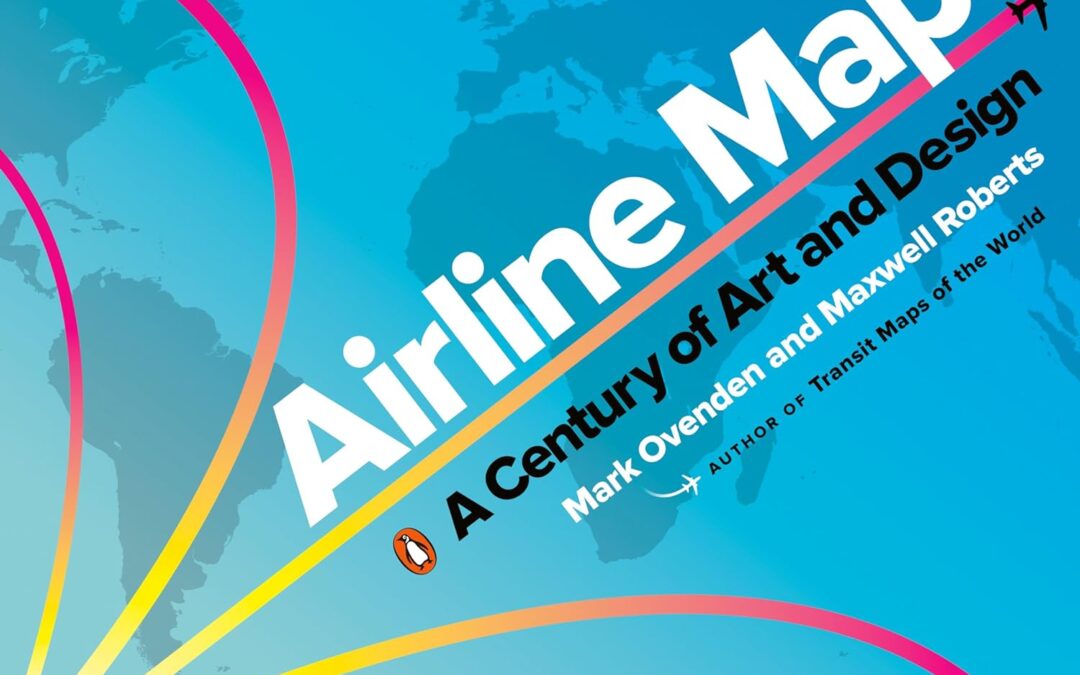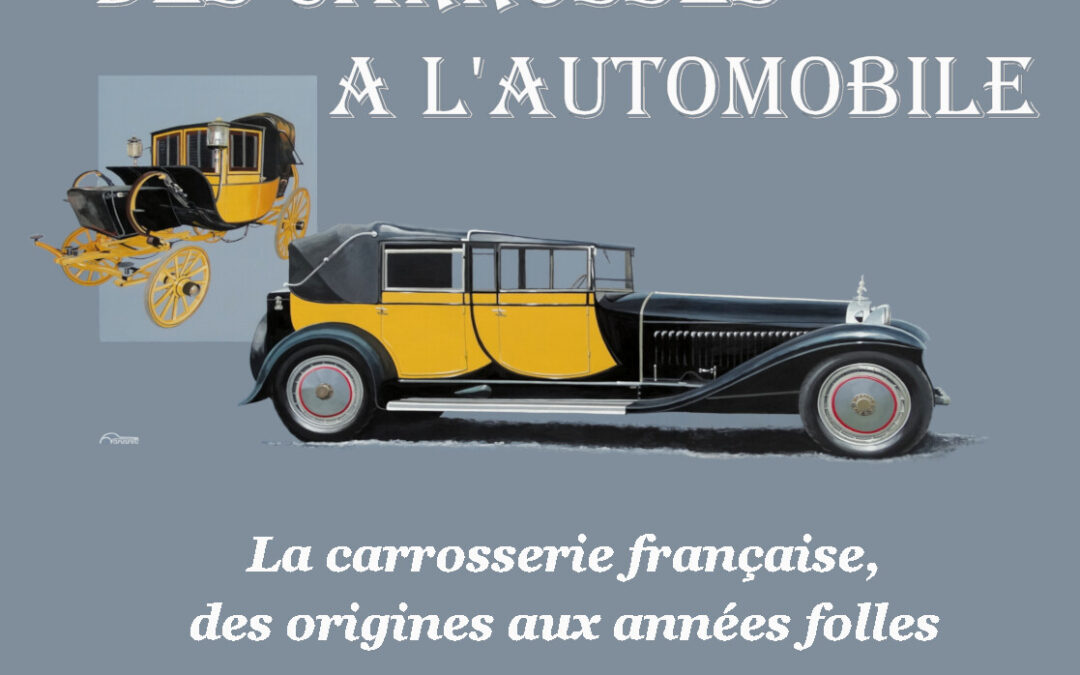
“Rumors, myths, and fantastic stories have swirled around the automobile since the first car appeared over 100 years ago.
Did you know that after James Dean’s death behind the wheel of his Porsche 550 Spyder, parts of the car were sold off and said parts then cursed their new owners?..
Did you know Bonnie and Clyde stole Ford V-8s almost exclusively as getaway cars because they were the fastest cars of their day?
Or that Clyde Barrow wrote Henry Ford a “thank-you” note for building the cars that made escaping his bank heists so successful?.
Did you know that peanuts in the shell are considered bad luck at NASCAR races?.
Did you know James Brown’s wife once claimed diplomatic immunity when fighting a traffic ticket because her husband was “the ambassador of soul”?.
Did you know Harry Houdini learned to drive late in life only because he needed to get to an airport for a stunt, and it was the only drive that he ever made?.
Have you heard the story of the mythical 200-mpg carburetor that the oil companies and auto manufacturers kept hidden from the public?.
How about the tale of Jocko Flocko, NASCAR racer Tim Flock’s simian co-driver?.
These are just a few of the automotive world’s crazy stories, mysteries, myths, and legends.
.
History’s Greatest Automotive Mysteries, Myths, and Rumors Revealed compiles a juicy selection covering subjects from racing to automakers, crime to pop culture, and historical to modern day. Read it and be amazed!”
GRUMMAN F11F-1F SUPER TIGER
GRUMMAN F9F-6/7/8 COUGAR PT. 1
GRUMMAN F9F PANTHER PT 3 USN
GRUMMAN F9F-6P/8P PHOTO COUGAR
GRUMMAN F9F-8/T/TF-9J 2-SEATER

The unusual and innovative swing-wing Jaguar program ended up being a one-airplane project even though, during its development, orders were placed for 112 aircraft.
That ship, BuNo 124435, would only be flown by one pilot, Corwin “Corky” Meyer. When the program concluded in 1953, after over a year of flight testing, the flight test example 124435 along with the number two ship 124436, which was some 90% complete, were shipped to the Naval Air Material Center, Philadelphia, for use in testing barriers and barricades. The static test article, which was some 60% complete, was shipped to the Aberdeen Proving Ground in Maryland for use as a target.
GRUMMAN F9F PANTHER PT 2 USMC
Grumman F-14 Tomcat in Combat
Grumman F-14 Tomcat: Bye – Bye
Tomcat!: The Grumman F-14 Story

Dan Sharp examines the aircraft’s technical development in unparalleled detail as well as analyzing the ongoing discussions surrounding the Me 262 at the highest levels within the Messerschmitt company, the German Air Ministry and Adolf Hitler’s inner circle.
There are many myths surrounding the development of the Messerschmitt Me 262 jet fighter. Its unparalleled performance is beyond doubt; easily able to outpace its opponents and possessing the firepower to shred them in seconds. Yet immediately after the Second World War, rumours abounded that official indifference, technical shortcomings and interference from the Führer himself had crippled the Me 262’s progress and delayed its appearance on the front line until it was far too late.
Begun as a series of design concepts during 1938, the fighter would not enter mass production until the spring of 1944. Even then it failed to make any notable impact until the closing weeks of the war, when Me 262s began destroying USAAF bombers at an alarming rate. Exactly what happened to cause this apparently late start and who was responsible has until now been largely a matter of conjecture.
Grounded in research involving thousands of wartime documents spread across archival collections in three countries, Messerschmitt Me 262 Development & Politics finally sweeps aside the myths and provides a clear understanding of the real history. Sharp examines the aircraft’s technical development in unparalleled detail as well as analysing the ongoing discussions surrounding the Me 262 at the highest levels within the Messerschmitt company, the German Air Ministry and Adolf Hitler’s inner circle.

A nostalgic and celebratory look back at one hundred years of passenger flight, featuring full-color reproductions of route maps and posters from the world’s most iconic airlines, from the author of bestselling cult classic Transit Maps of the World.
In this gorgeously illustrated collection of airline route maps, Mark Ovenden and Maxwell Roberts look to the skies and transport readers to another time. Hundreds of images span a century of passenger flight, from the rudimentary trajectory of routes to the most intricately detailed birds-eye views of the land to be flown over. Advertisements for the first scheduled commercial passenger flights featured only a few destinations, with stunning views of the countryside and graphics of biplanes. As aviation took off, speed and mileage were trumpeted on bold posters featuring busy routes. Major airlines produced highly stylized illustrations of their global presence, establishing now-classic brands. With trendy and forward-looking designs, cartographers celebrated the coming together of different cultures and made the earth look ever smaller.
Eventually, fleets got bigger and routes multiplied, and graphic designers have found creative new ways to display huge amounts of information. Airline hubs bring their own cultural mark and advertise their plentiful destination options. Innovative maps depict our busy world with webs of overlapping routes and networks of low-cost city-to-city hopping. But though flying has become more commonplace, Ovenden and Roberts remind us that early air travel was a glamorous affair for good reason. Airline Maps is a celebration of graphic design, cartographic skills and clever marketing, and a visual feast that reminds us to enjoy the journey as much as the destination.







